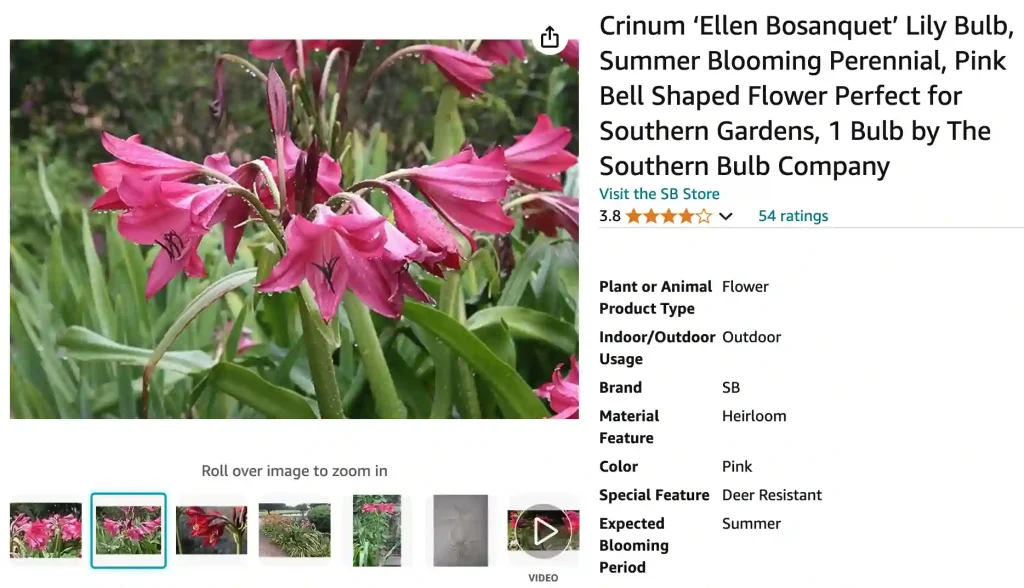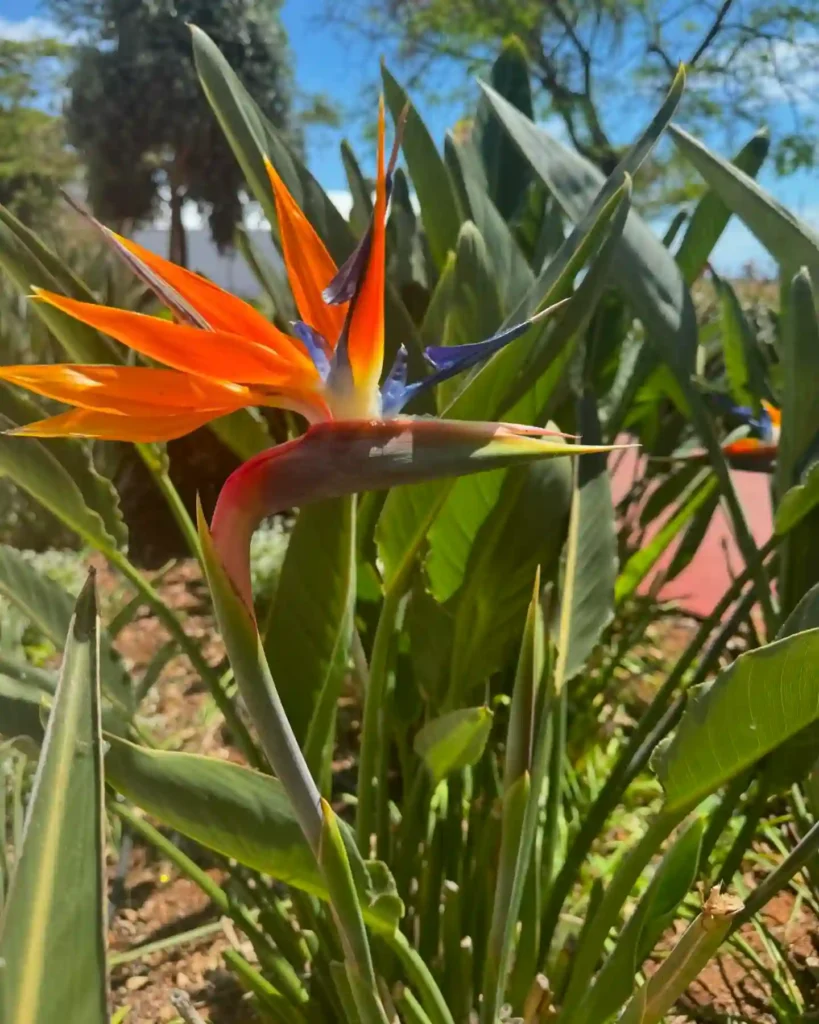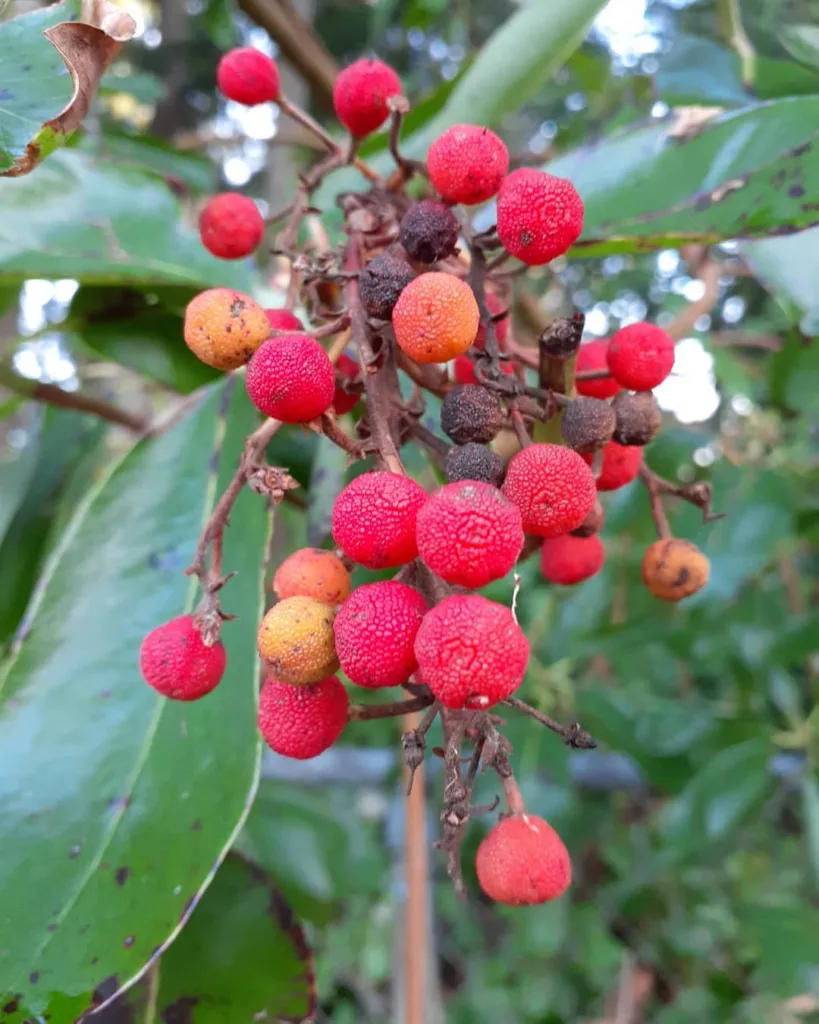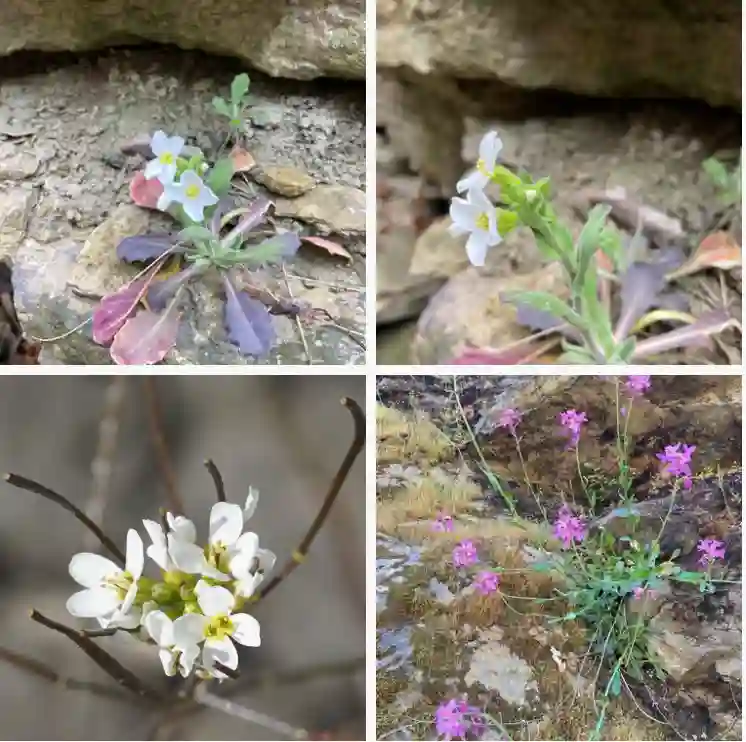
FAQs About Crinum Ellen Bosanquet
As a gardening enthusiast, I’ve had my fair share of experiences with different plants, and Crinum Ellen Bosanquet is one that stands out. This beautiful and robust plant often piques the interest of fellow gardeners. Here’s a comprehensive guide to address the most frequently asked questions about Crinum Ellen Bosanquet.
116 Species in Genus Crinum
What Is Crinum Ellen Bosanquet?
Crinum Ellen Bosanquet is a stunning member of the Crinum family, known for its large, fragrant flowers and lush foliage. Originating from tropical regions, this perennial bulb plant is admired for its ability to thrive in various conditions. The plant produces impressive clusters of white to pale pink flowers, which have a pleasant scent and can add a touch of elegance to any garden.
How to Care for Crinum Ellen Bosanquet?
Light Requirements: Crinum Ellen Bosanquet thrives in full sun to partial shade. Ideally, it should receive at least 6 hours of sunlight daily. In regions with intense heat, some afternoon shade can help protect it from scorching.
Soil Conditions: This plant prefers well-drained soil with a pH level between 6.0 and 7.0. Adding organic matter like compost can improve soil structure and fertility. It’s crucial to avoid waterlogged soil as it can lead to root rot.
Watering: Crinum Ellen Bosanquet is relatively drought-tolerant once established, but regular watering helps it perform at its best. Water the plant deeply during dry periods, allowing the soil to dry out between waterings.
Fertilization: Feed the plant with a balanced, slow-release fertilizer in early spring and again in midsummer. Avoid over-fertilizing, as it can lead to excessive foliage growth at the expense of flowering.
Pruning: Deadhead spent flowers to encourage more blooms and remove any damaged or diseased foliage. Pruning helps maintain the plant’s overall health and appearance.
How to Propagate Crinum Ellen Bosanquet?
Crinum Ellen Bosanquet can be propagated through bulb offsets or seeds. Here’s how:
Bulb Offsets: The easiest method is to divide the bulbs. Wait until the plant has finished flowering and the leaves have started to die back. Carefully dig up the bulbs and separate the offsets from the main bulb. Replant them in well-prepared soil at the same depth they were growing previously.
Seeds: If you’re looking to grow Crinum Ellen Bosanquet from seeds, sow them in a seed tray filled with seed-starting mix. Keep the tray in a warm, sunny location and maintain consistent moisture. Germination can take several weeks, so patience is key.
What to Plant With Crinum Ellen Bosanquet?
Crinum Ellen Bosanquet pairs beautifully with a variety of companion plants. Consider planting it alongside:
- Daylilies: Their vibrant flowers and similar growing conditions complement the Crinum well.
- Hostas: The contrasting foliage adds texture and a lush look to garden beds.
- Ornamental Grasses: Grasses like Fountain Grass provide a soft, flowing contrast to the bold Crinum flowers.
Benefits of Crinum Ellen Bosanquet
Crinum Ellen Bosanquet is not just a pretty face in the garden. Here are some benefits of growing this plant:
- Low Maintenance: Once established, Crinum Ellen Bosanquet requires minimal care, making it ideal for busy gardeners.
- Resilient: It is tolerant of various soil types and weather conditions, including drought.
- Attractive Foliage and Flowers: The plant’s large, glossy leaves and fragrant flowers enhance garden aesthetics and attract pollinators like bees and butterflies.
Is Crinum Ellen Bosanquet Toxic?
Crinum Ellen Bosanquet is generally considered non-toxic to humans and pets. However, it’s always a good idea to keep plants out of reach of small children and pets to avoid any accidental ingestion.
Common Problems with Crinum Ellen Bosanquet
Despite its hardy nature, Crinum Ellen Bosanquet can face a few issues:
- Root Rot: This is often due to waterlogged soil. Ensure proper drainage to prevent this problem.
- Pests: Watch out for pests like aphids and spider mites, which can occasionally infest the plant. Regular inspection and, if necessary, appropriate pest control measures can help manage these issues.
Compare with Other Crinum Varieties
Crinum Ellen Bosanquet is often compared to other Crinum species like Crinum Augustum and Crinum Powelli. Here’s how it stacks up:
- Crinum Augustum: While similar in size and flower structure, Crinum Augustum generally has darker green leaves and may require more water.
- Crinum Powelli: This variety is known for its bright pink flowers and slightly smaller stature compared to Crinum Ellen Bosanquet.
In summary, Crinum Ellen Bosanquet is a versatile and beautiful plant that can be a stunning addition to any garden. Its ease of care, attractive blooms, and resilience make it a favorite among gardeners like me. Whether you’re a seasoned pro or a beginner, this plant is worth considering for your garden.
If i die, water my plants!



